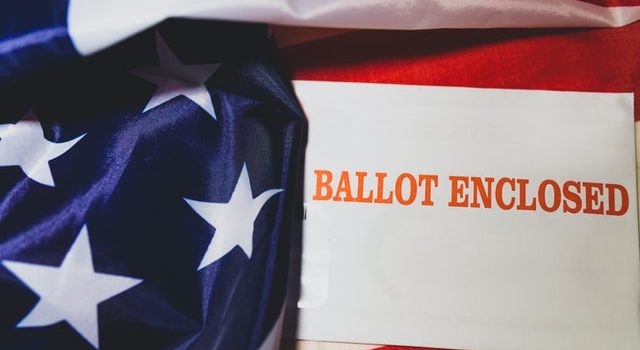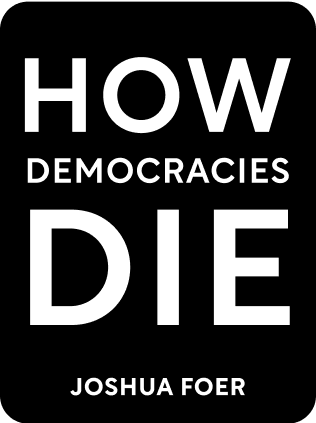

This article is an excerpt from the Shortform book guide to "How Democracies Die" by Steven Levitsky and Daniel Ziblatt. Shortform has the world's best summaries and analyses of books you should be reading.
Like this article? Sign up for a free trial here .
What is voter suppression? How do politicians suppress people from exercising their right to vote?
Voter suppression in the United States involves any efforts (both legal and illegal) that prevent people from casting their votes. The most effective tactics are gerrymandering (the redrawing of election districts to lock in political advantage for one party) and restricting who is eligible to vote.
In this article, we’ll look at a couple of historical examples of voter suppression.
Gerrymandering
In How Democracies Die, Levitsky and Ziblatt cite an example of voter suppression through gerrymandering: Viktor Orbán’s Fidesz Party in Hungary. After winning power in 2010, Fidesz members of parliament redrew the boundaries of parliamentary constituencies to give massively disproportionate power to the party’s base of rural voters. Because of the gerrymander, Fidesz holds two-thirds of the seats in parliament despite winning only 44 percent of the nationwide vote.
| The International Response to Democratic Backsliding Although Levitsky and Ziblatt don’t explore the topic, the example of Hungary illustrates the challenges faced by the international community when a neighboring country begins to slide toward authoritarianism. Hungary is part of the European Union (EU), a body whose basic criteria for membership includes a free and democratic political system. It is widely accepted that Hungary’s democracy has eroded since 2010—the think tank Freedom House even downgraded the country’s status in 2020 to “partly free” in response to Orbán’s anti-democratic moves. Yet the EU has struggled to deal with Hungary’s eroding democracy under Orbán. Since Orbán came to power, the EU has attempted to confront the Hungarian leader over several issues—from media suppression to court-packing to gerrymandering—only to see Orbán successfully stop any outside pressure to democratize his regime. Critics argue that he has gotten away with his authoritarian practices while still retaining Hungary’s EU membership by skillfully exploiting divisions within the EU and taking advantage of the body’s overly slow and legalistic grievance processes. |
Poll Taxes, Literacy Tests, and Ballot Manipulation
Levitsky and Ziblatt also point to the successful efforts by Southern Democrats to marginalize Black voters in the late 19th century.
After the U.S. Civil War, emancipation, and the defeat of the Confederacy, Black men were given the right to vote in the South for the first time in history. This right was enshrined in the Fifteenth Amendment to the U.S. Constitution.
Black voters overwhelmingly supported the Republican Party, which was the party of Abraham Lincoln and emancipation. This was an outrage to white voters in these states—almost uniformly Democrats—who saw Black enfranchisement as an unacceptable threat to the region’s racial, social, cultural, political, and economic order. These Southern Democrats thus made it their mission to destroy Black voter rights.
Under new state constitutions that were eventually drafted in all 11 states of the former Confederacy, Southern Democrats severely curtailed the Black franchise. They achieved this by requiring voters to pay poll taxes when they showed up to vote, pass literacy tests, and navigate through deliberately complicated ballots before they could cast their votes. These obstacles made it especially difficult for Black voters (who, being formerly enslaved people, were largely poor and illiterate) to exercise the franchise. Levitsky and Ziblatt argue that these new state constitutions effectively killed true democracy in the South for over a century and made the region a one-party authoritarian state.
| Racial Violence in the Post-Civil War South Although Levitsky and Ziblatt do not directly address it in their analysis of Black disenfranchisement in the Reconstruction-era South, violence played a key role in reestablishing the white supremacist racial order—in addition to legal sanctions like poll taxes and literacy tests. According to the NAACP, 3,446 African-Americans were lynched in the United States between 1882 and 1968, with the majority of these murders taking place in the South. Scholars estimate the real number, however, to be much higher, since many lynchings went unreported. And the period immediately following the Civil War through the early 20th century—called the “nadir of American race relations” by some historians—was also the period when the white supremacist terrorist organization the Ku Klux Klan was at its most powerful. A crucial mission of the Klan was to use violence to prevent Black people from voting, holding office, or attaining economic power. According to the Southern Poverty Law Center, the Klan engaged in a lethal campaign of extrajudicial violence against African-Americans in the South as part of its efforts to suppress and intimidate Black voters during the 1868 election. |

———End of Preview———
Like what you just read? Read the rest of the world's best book summary and analysis of Steven Levitsky and Daniel Ziblatt's "How Democracies Die" at Shortform .
Here's what you'll find in our full How Democracies Die summary :
- How shared norms are essential for preserving democracy
- Why the Trump presidency threatened those shared norms
- Why democracy goes beyond individual leaders and parties and must be a shared enterprise among committed individuals






